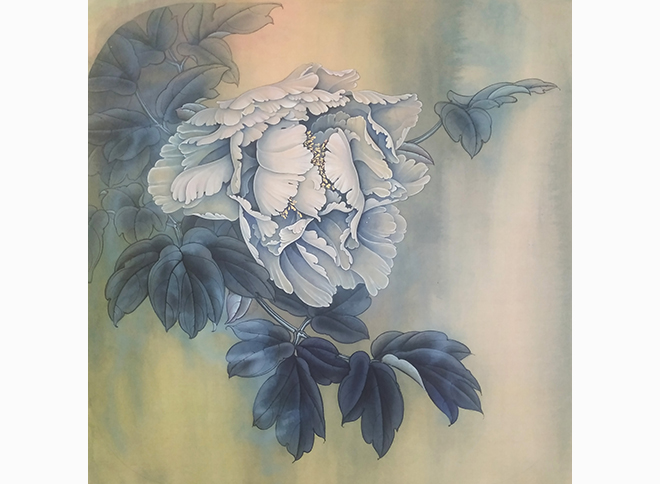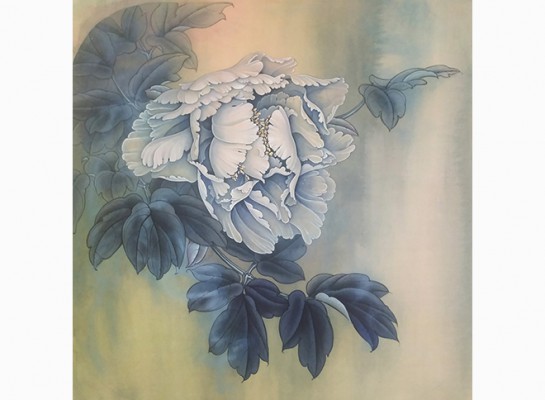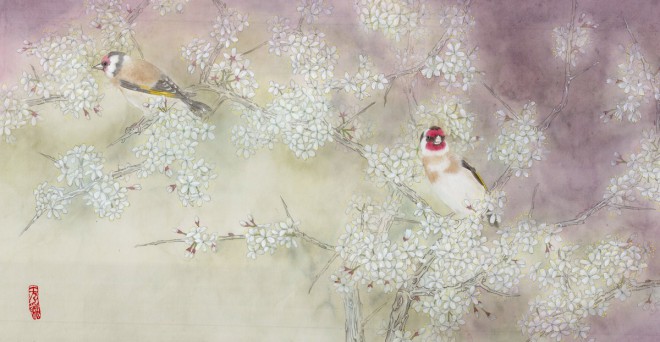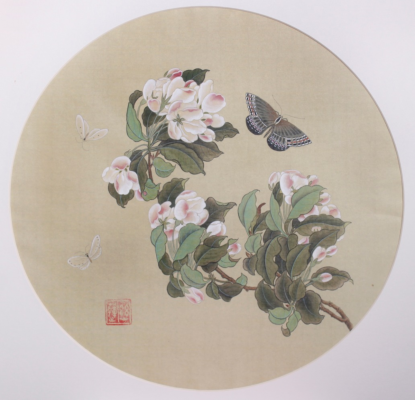On the 9th of September The State Museum of Oriental Art will open the exhibition "Summer Day in the mountain pavilion" in the framework of the Fourth Festival of Chinese Gongbi Painting. The exhibition will feature paintings in the ancient Gongbi style, as well as works in the technique of Mogu-Fa and in the genre of Shan shui. Around 100 exhibits will be shown at the exhibition: 90 paintings and scrolls made by contemporary artists from Russia and China, as well as hand-painted silk fans by current artists.
Ministry of Culture of the Russian Federation
The State Museum of Oriental Art
China Cultural Center in Moscow
Moscow Club of Chinese Painting Gongbi
Curators: Julia Tolmacheva, Oksana Sharova, Nadejda Andrijanova
On the September 9 The State Museum of Oriental Art will open the exhibition "Summer Day in the mountain pavilion" in the framework of the Fourth Festival of Chinese Gongbi Painting. The exhibition will feature paintings in the ancient Gongbi style, as well as works in the technique of Mogu-Fa and in the genre of Shan shui. Around 100 exhibits will be shown at the exhibition: 90 paintings and scrolls made by contemporary artists from Russia and China, as well as hand-painted silk fans by current artists.
Large-scale educational program is planned within the festival, that will include lectures and master classes.
The Fourth Festival is organized with the support of the Chinese Cultural Center in Moscow. Renowned Chinese artist Tu Zhun* will be the headliner of the festival and will personally attend the grand opening.
From the Chinese language, the word "Gongbi" translates as "careful or diligent brush". Indeed, this style of painting, which originated in the II century B.C. (Han Dynasty, 206-220 B.C.), is characterized by special attention to detail and decorative effect. A characteristic feature of the style is the use of a realistic method of depicting objects of wildlife and inanimate nature, using traditional Chinese materials: rice paper or hand-made silk, Chinese ink prepared according to ancient recipes, water-soluble mineral paints or pigments, and handmade brushes. According to the tradition, special attention in Gongbi technique is paid to the construction of composition and contouring of future work. Calligraphic lines used in Gongbi are graceful and graphic. A laborious multiple application of thin layers of paint gives the works the effect of subtle glow and rich transitions of tone and color.
Curator of the Festival of Chinese Painting Gongbi Julia Tolmacheva states that painting in this style is characterized by realistic images of objects, the presence of carefully painted contour lines and painting in many layers, sometimes reaching to a hundred.
"Gongbi in Chinese means "a thorough or diligent brush," says Julia Tolmacheva. It takes up to several weeks to create a picture from a sketch, then to work out a contour according to all requirements, and color it with different special techniques. It is essential to understand that the paints used by artists are water-based and dry quickly enough. However, all this hard work pays off, as Gongbi style paintings look very decorative and pleasing to the eye. It was in the Gongbi style that the artists, who painted the interiors of the palaces of the Emperor and the nobility, worked.
The artists, who worked for the emperor, were obliged to master the Gongbi style techniques. The emperor had a whole staff of artists who worked exclusively in this technique. Moreover, only wealthy people could afford to buy this kind of paintings. The scrolls were kept in the strictest secrecy in the emperor's palace and the chambers of wealthy families.
The exhibition will unite works of modern Chinese and Russian painters in the museum space. Favorite subjects are peonies, lotuses, carps, everything that has a benevolent and symbolic meaning in Chinese painting. Peony is not just a flower, but a symbol of well-being and prosperity. Lotus is a symbol of a morally pure man, steadily passing through the "mud" and the temptations surrounding him in life.
The works of professional contemporary artists will surprise those present with extremely careful drawing tehcnique: animal hair or the subtlest color nuances of flower buds - all this is masterfully reflected in the artists' works. Visitors will be able to learn about Chinese art, its uniqueness and originality.
The festival is organized by the Moscow Club of Chinese painting Gongbi.
After the festival, it is planned to hold an online auction.
__________________
*Tu Zhun was born in northern China in Henan city. Since the age of eight he studied European oil painting and drawing, as well as classical Chinese Go-hua painting. In 2016, he graduated from the Institute of Fine Arts in Zhengzhou. For 6 years, he taught l in Henan traditional Chinese ghohua painting. He is a graduate of a number of competitions, including the 6th China National Competition "Exhibition of Achievements of Art Education" Blooming Time. Currently works in the technique of Gongbi on silk, creating Buddhist tanks and paintings.




